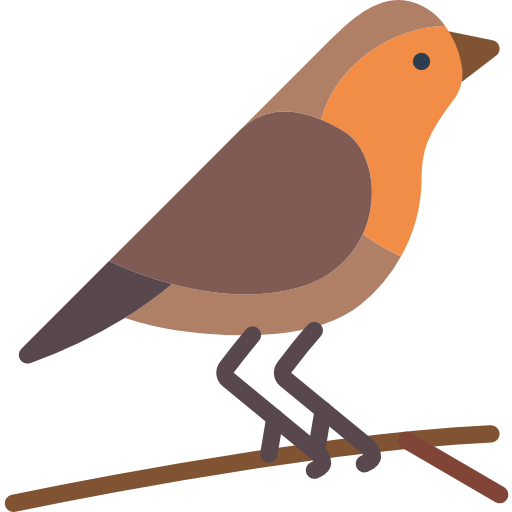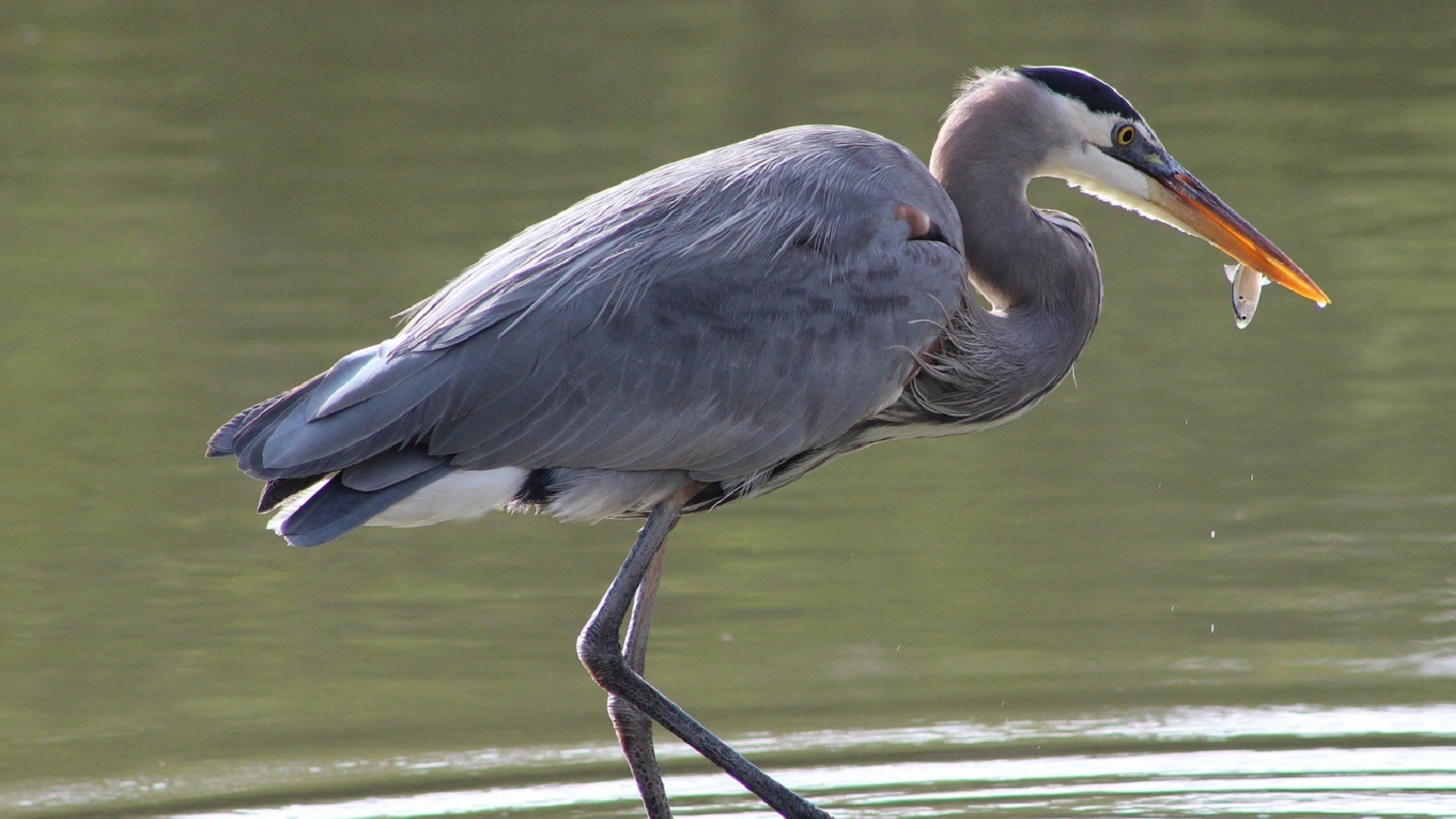If you’ve ever spotted a tall, statuesque bird wading through the shallows of a lake or standing motionless along a marshy shoreline, chances are you’ve seen a Great Blue Heron. These graceful birds are one of the most widespread herons in North America, and they’re hard to miss with their impressive size and striking blue-gray plumage.
Whether you’re a birdwatching enthusiast, a nature photographer, or simply someone who enjoys exploring the outdoors, the Great Blue Heron offers a fascinating glimpse into the world of wading birds. From their unique hunting techniques to their sky-high nests, these birds are full of surprises.
In this guide, you’ll discover everything you need to know about the Great Blue Heron—from its scientific classification to its habitat, behaviors, and intriguing facts. If you’re hoping to spot one or just want to learn more, you’re in the right place. Let’s dive into the world of this iconic waterbird.
Great Blue Heron (Ardea herodias)
Scientific Classification
- Common Name: Great Blue Heron
- Scientific Name: Ardea herodias
- Family: Ardeidae
- Order: Pelecaniformes
- Genus: Ardea
- Species: A. herodias
The Great Blue Heron belongs to the same family as egrets and other herons. It’s the largest heron native to North America and is closely related to other species in the Ardea genus, known for their long legs, sharp bills, and elegant flight.
Physical Description
When you see a Great Blue Heron, you’ll immediately notice its impressive size and elegant stature. These birds can grow up to 3.2 to 4.5 feet (97–137 cm) tall and boast a wingspan of 5.5 to 6.6 feet (167–201 cm), making them one of the largest wading birds in the region. Despite their size, they weigh only around 5 to 6 pounds (2.3–2.7 kg) thanks to their lightweight, hollow bones.
Their plumage is mostly bluish-gray with black and white accents. You’ll also spot a long, black stripe extending from just above the eye to the back of the head, often forming a wispy black plume or crest. The neck is long and S-shaped, useful for striking prey, and their chest displays shaggy feathers called plumes, especially noticeable during breeding season.
Their dagger-like yellowish bill is perfect for spearing fish and frogs, and their long legs help them wade through shallow waters with ease. Their eyes are yellow and keen, giving them exceptional vision for spotting prey from a distance.
Habitat and Distribution
Great Blue Herons are highly adaptable and can be found across most of North and Central America, from Canada down to the northern parts of South America. In the U.S., they’re year-round residents in the South, while northern populations migrate to warmer areas in winter.
You’ll typically find these birds near bodies of water such as lakes, rivers, estuaries, marshes, swamps, and coastal shorelines. They’re especially fond of wetlands with shallow water, where they can slowly stalk their prey.
Interestingly, Great Blue Herons are even seen in urban and suburban parks if water sources are available. They’re more flexible than you might think when it comes to habitat.
Behavior
Great Blue Herons are solitary hunters and are most often seen alone, standing still or slowly walking through the water in search of prey. Their hunting strategy is all about patience. They’ll freeze in place for several minutes, waiting for the perfect moment to strike with lightning speed.
In flight, these birds are a sight to behold. They fly with slow, steady wingbeats and a tucked-in neck, which differentiates them from cranes who fly with necks outstretched. Watching them glide over a marsh or lake at sunset is a magical experience.
Although solitary in feeding, they often nest in colonies known as heronries. During the breeding season, you’ll find them gathering in large numbers, sometimes with other waterbird species.
Diet
The diet of a Great Blue Heron is as varied as its range. While fish make up the bulk of their meals, they also consume:
- Amphibians like frogs and salamanders
- Reptiles such as snakes and small turtles
- Small mammals like rodents
- Insects
- Crustaceans and even other birds on occasion
They are opportunistic feeders and will eat almost anything they can catch and swallow whole. Their slow, deliberate stalking and quick strikes with their sharp bill make them formidable predators in the wetlands.
Breeding and Nesting
Great Blue Herons usually breed in colonies high up in trees near water, although they sometimes nest in shrubs or even on the ground if trees aren’t available. These colonies can contain dozens or even hundreds of nests.
The breeding season varies by region but generally occurs in spring and early summer. Males perform elaborate courtship displays, including neck stretching, bill snapping, and presenting nesting materials to the female.
Once paired, both parents build the nest together using sticks, twigs, and softer materials like moss or leaves. The female lays 2 to 6 pale blue eggs, and both parents share incubation duties, which lasts about 27 to 29 days.
Chicks remain in the nest for nearly 2 months, during which time both parents feed them. After fledging, young herons continue to rely on their parents for food for a few more weeks before becoming independent.
Interesting Facts
- They can live over 15 years in the wild, although most don’t survive that long due to predation or environmental hazards.
- Despite their size, they’re light flyers, thanks to hollow bones and wide wingspans.
- They swallow prey whole, often manipulating it in their bills to ensure it goes down headfirst.
- They’re very sensitive to human disturbance during nesting season and may abandon nests if approached too closely.
- They have specialized vertebrae in their necks, allowing that sharp S-shaped curve used in their lightning-fast strikes.
- They sometimes freeze in place like statues to avoid scaring off prey, blending in with their surroundings remarkably well.
Frequently Asked Questions
1. Are Great Blue Herons dangerous?
No, Great Blue Herons are not dangerous to humans. They are shy, solitary birds that usually avoid people. However, they may defend themselves with their sharp bill if cornered.
2. Do Great Blue Herons migrate?
Yes, some populations migrate, especially those in the northern U.S. and Canada. They typically move southward during the winter to Central America, the southern U.S., or northern South America.
3. How can I tell a Great Blue Heron from other herons?
Great Blue Herons are larger than most other herons, with distinctive blue-gray plumage, a long neck, a black plume on their head, and a slow, graceful flight with their necks tucked in.
4. What sounds do Great Blue Herons make?
Their calls are deep, harsh croaks or squawks, often heard during flight or at nesting sites. It’s not a musical sound but more of a guttural “fraaank.”
5. What threats do Great Blue Herons face?
Habitat loss, pollution, and human disturbance during nesting are the main threats. Wetland conservation efforts are crucial to protecting their habitats and breeding grounds.
Conclusion
The Great Blue Heron is truly one of nature’s marvels. With its elegant form, patient hunting style, and widespread presence, it’s a bird that captures attention and admiration. Whether you’re birdwatching in a city park or exploring a remote wetland, spotting a Great Blue Heron is always a treat.
By understanding their behavior, habitat needs, and life cycle, you can better appreciate these magnificent birds and their role in the ecosystem. As wetlands face ongoing threats from development and climate change, your awareness can help support conservation efforts that keep their habitats thriving.
Next time you’re near a body of water, keep an eye out—you just might catch a glimpse of this graceful blue giant standing quietly in the reeds, watching the world with patient eyes.







